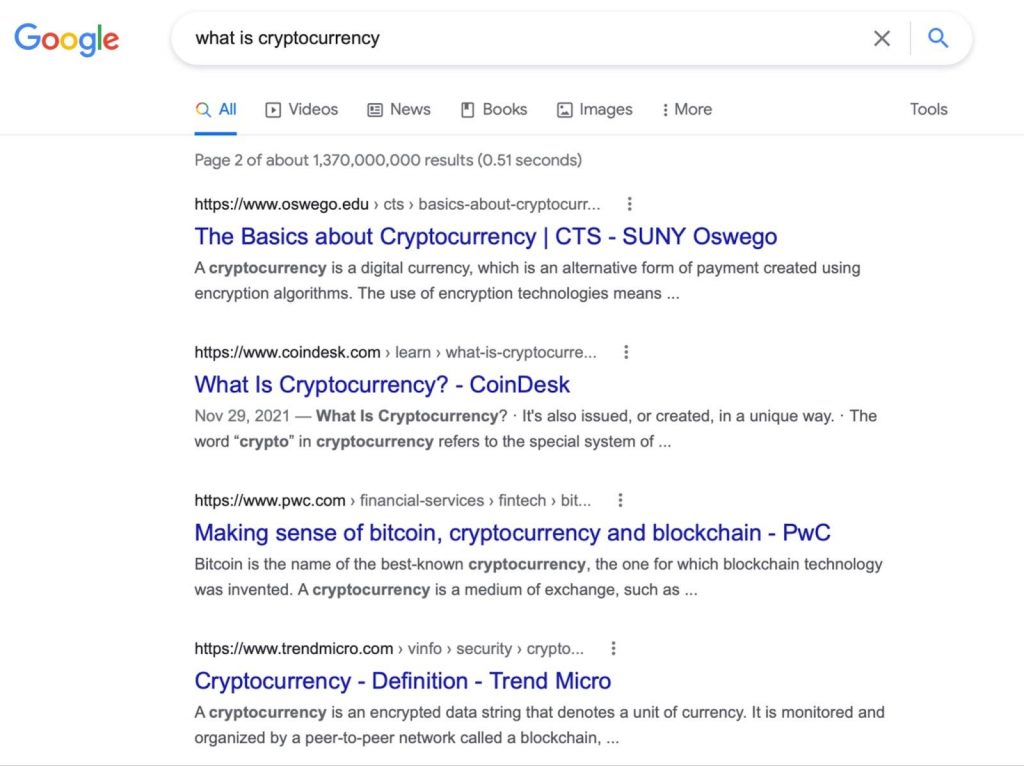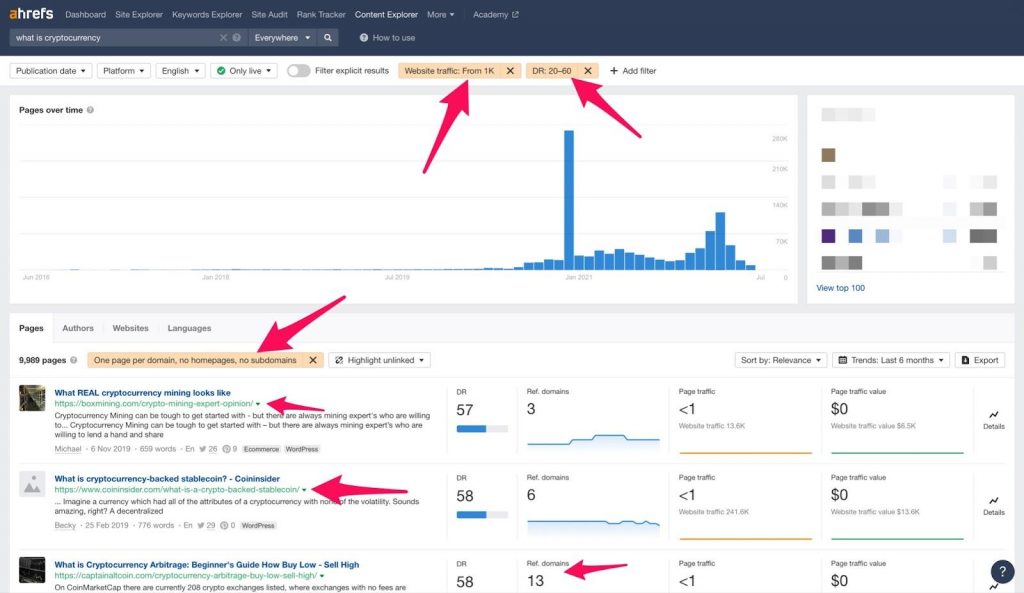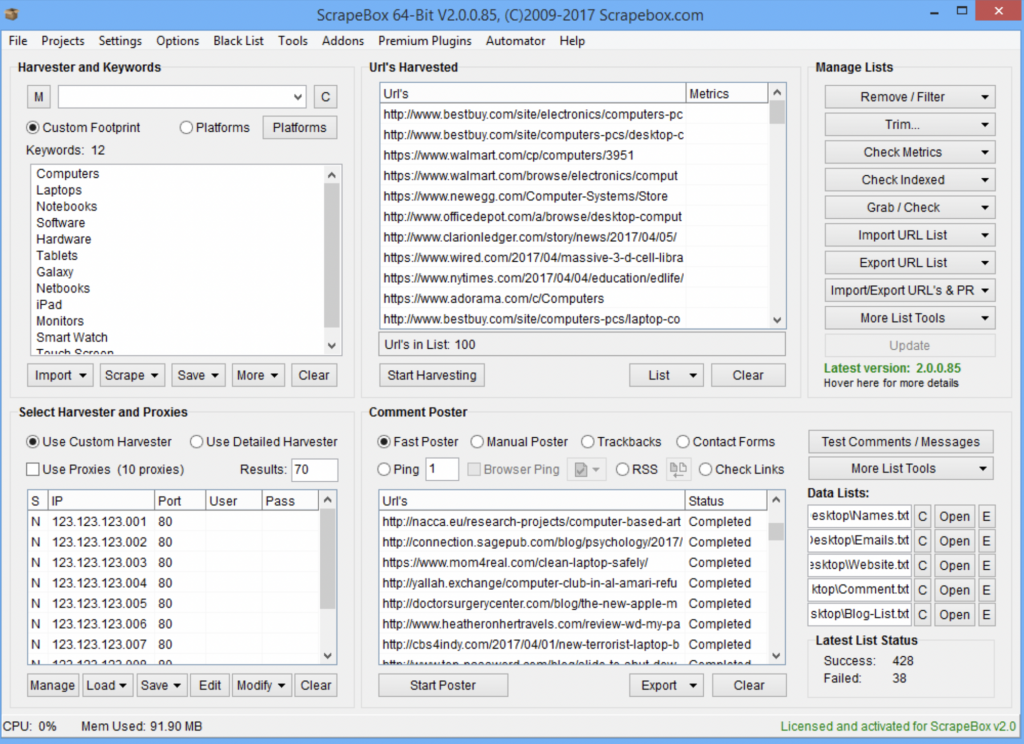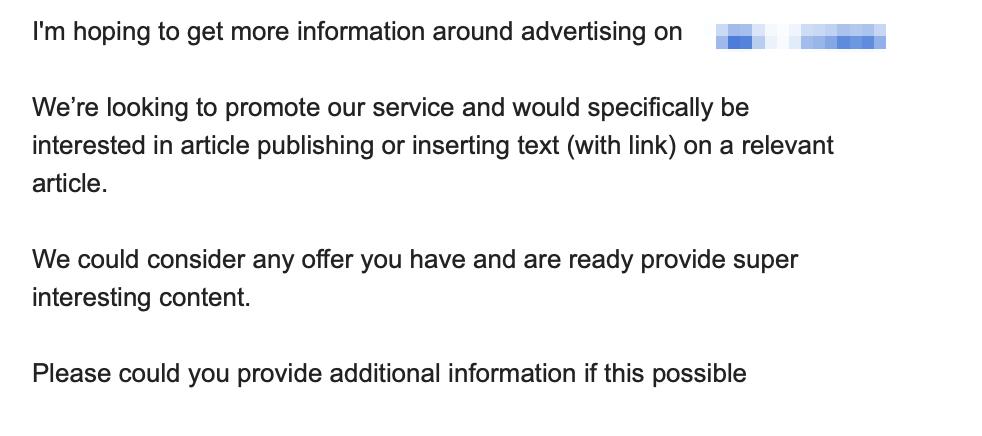
On almost every freelance exchange or agency service page, you will find endless examples of professionals that advertise their outsourced link building service with the following tagline:
“Only the highest quality links!”
But in reality, what does this actually mean?
Not to mention what is the process behind getting these self proclaimed “high quality links” and how do they overcome the challenges faced during outreach?
In this guide we share the ideal process and challenges you may face building links yourself.
Or what to look for when outsourcing link building to a professional or team.
Introduction to the Link Building Process
Let’s start off by stressing just how imperative it is that your site’s link profile is highly varied.
For this very reason, many site owners and SEO professionals choose to focus on backlink outreach as their primary link building strategy.
Simply because it affords them the greatest control over the links they receive and thus their variation.
Getting a high quality link via backlink outreach, involves targeting well written articles, published on high quality domains within your niche.
But obviously no matter what you have to offer, not every site that you target is going to be receptive to linking back to your content.
As a result, building a long and targeted list of prospects is the perfect way to kick off the process.
Building a List of Prospects
While prospecting, you’re going to need to ensure you first build a list of the following at the bare minimum:
- A list of websites to contact.
- A valid email address to contact the owner.
But keep in mind that the more information you record about each prospect at this early stage, the easier it will be to personalize your messages and ultimately close the deal.
As for how to build your list of prospects, let’s make the process easier to understand by breaking things down a little further.
1. Find Websites by Searching on Google
The simplest and often most effective place to start finding websites to contact for link building is to simply search for businesses or sites in your niche on Google.
This simply involves going to Google and typing in a query featuring your niche.
In the following example we’re searching for sites within the cryptocurrency niche:

But obviously the idea is to run search terms related to your own niche.
From here, you’re able to manually collect websites into a Google Sheet and add any contact details and other information that you’re subsequently able to source.
Organize the data into two columns named Domain and URL, then continue to populate the sheet as you continue to prospect.
This data is invaluable when it comes time to figure out who exactly you want to contact and what to include in your message when you do.
At this stage, our pro tip would be that there is no such thing as gathering too much information on potential prospects!
2. Sort the Data Using Ahrefs Content Explorer
In order to more efficiently sort the data found in these simple Google searches, the Ahrefs Content Explorer becomes an extremely handy tool to implement.
As you would no doubt know from any time that you use Google for personal reasons, no matter what you do, you’re going to receive A LOT of irrelevant results.
But Ahrefs can help you more effectively sort your results.

When it comes to sorting, we recommend using the following parameters within the tool:
- Ahrefs DR > 20.
- Ahrefs website traffic > 1000.
- One page per domain.
- Exclude the homepage and subdomains.
3. Utilize Scrapers to Make Things Easier
Finally, don’t forget that you can always use a tool like Scrapebox or one of their many free alternatives.
When it comes to collecting data from SERPs, scrapers can and will make your life a lot easier so don’t be afraid to automate where you can.

Filtering Your List of Potential Websites
No matter how hard you try, your collected list of potential prospects is going to feature a lot of unnecessary rubbish that you are best served by not wasting your time messaging.
In order to start filtering your list, we recommend setting up a blacklist containing unwanted domain zones and sites that you want to remove from your list, well in advance.
Assuming that you already have desired criteria for sites that need to be blacklisted, you can quickly set up these parameters in Scrapebox.
Follow this list of steps with help from the video at the bottom:
- Insert your list of domains/urls that need to be cleaned.
- Trim URLs to the root domain.
- Select “Remove URLs containing entries from”.
- Select a pre-prepared file.
- Delete the lines you don’t need.
Message Templates and how to Send
Now that you have a ready list of sites whose owners that you want to get in contact with, it’s time for the fun part of prospecting.
Figuring out how to most effectively cold message each specific prospect and testing just how receptive they are to giving you a link!
When it comes to sending cold messages, there are two questions that you need to answer:
- What to write in the first message?
- Whether to send your messages manually or automate the process?
Keep in mind that what you say in the first message will directly affect the number of responses that you receive.
If it’s too long, then there is a high chance that it will not even get read, let alone get them to respond.
The key to effective cold messaging is writing clearly and concisely.
Here’s an good example:

As for how to send your messages?
Whether you choose to individually send each message via the GMail interface, or automate your broadcast process using a tool such as Link Assistant, is entirely up to you.
There really is no right or wrong way here and we’d encourage you to experiment with what works best for you and your personal style.
Analyzing Offers and Overcoming Challenges
Of course not every site that you engage with will turn out to be a good fit and as such, you need to make a final call before going ahead with any deal.
Maybe their asking price is too high or they are only willing to offer links on domains that are in fact unrelated to your niche.
Here’s a checklist to keep you on the right track and overcome the most common challenges you will face:
- Is the site in your niche? – The site must be related to the niche you are promoting.
- What is the domain’s Ahrefs DR? – The minimum you should aim for is DR20. Also pay close attention to the quality of referring domains. They should not be spammy and have good indicators.
- Is there a steady flow of traffic? – Stable or growing organic traffic is one of the main (but not only) indicators that their website is working and will bring you benefits.
- Do they rank well on Google? – It’s good if the top keywords that they rank for, are relevant or similar to yours.
- Is it a free link? – If you see the words “write for us” or “contribute” on their site, you’re better off avoiding it. They indicate the ability for anyone to upload an article to that site for free, greatly reducing the value of such a link.
- Is it a sponsored link? – Similarly avoid it if you see the word “sponsored”. To be an effective link, your content must look organic. But these words inform Google that your content has instead been bought, thus devaluing it greatly.
- Are there more inbound than outbound links? – The logic here is very simple: If the site on which you want to receive a link from has received more inbound links than provided outbound links, then that is a good sign. The ideal ratio is 1:1, but certainly no more than 3:1.
- Are they in a niche forbidden by Google? – Pay special attention to sites that post adult, gambling and links from other forbidden niches. If they do, then you’re much better served by avoiding links from these domains entirely.
Final Thoughts on the Process and Challenges of Outsourcing Link Building
The link building process included in outreach is often seen as a chore.
But by understanding the key principles that we’ve gone over here, we’ve hopefully shown you that it doesn’t have to be.
By following this guide you will now have a greater understanding of the ideal process and challenges you may face building links yourself.
Or at least what to look for if you choose to outsource link building to a professional or team.
If you’re looking to outsource your link building efforts and want to discuss this guide in the context of your specific website with our dedicated team of experienced link building professionals, get in touch with us by clicking here now.
We’re more than happy to review your site and come up with the most effective link building strategy for you.